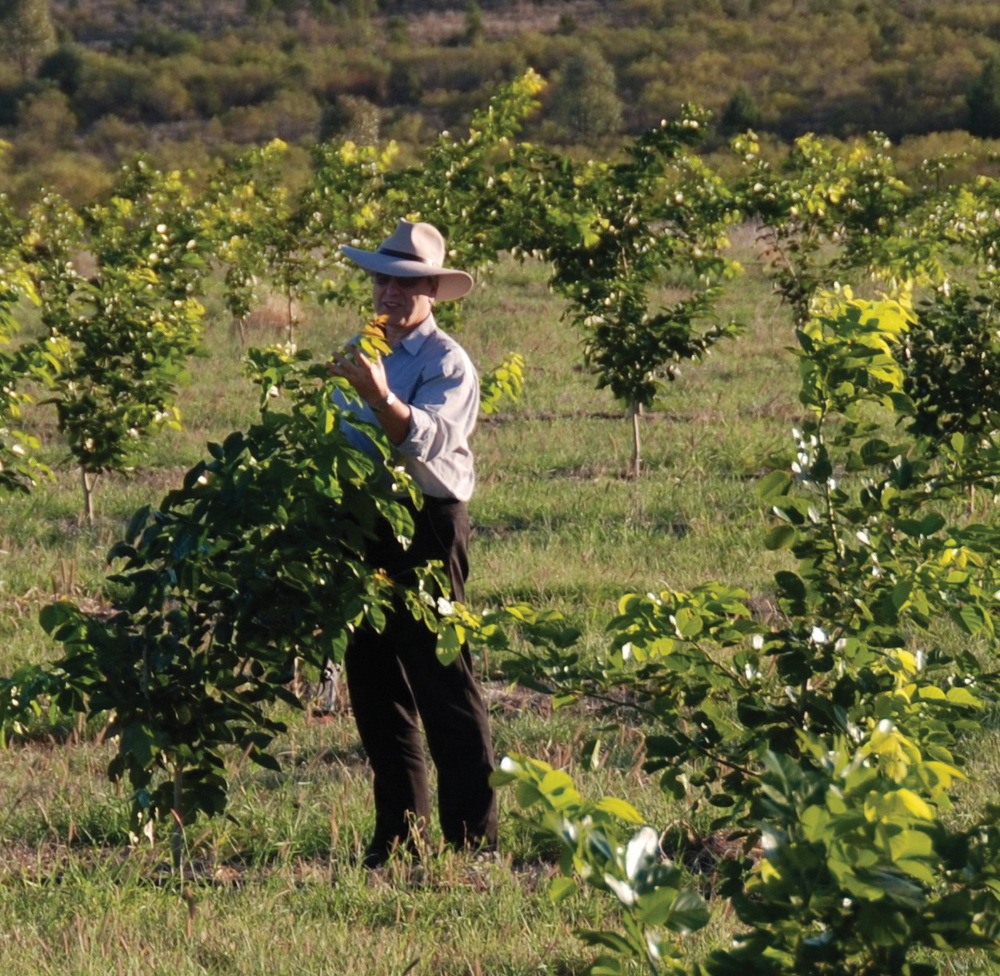Exploring New Feedstock Sources

PHOTO: University of Queensland
January 18, 2012
BY Erin Voegele
A legume tree native to tropical and temperate regions around the world is attracting attention as a potential new biodiesel feedstock. Pongamia Pinnata—also known as Millettia Pinnata—produces oil-rich seeds that can be harvested via the same mechanical shaking methods employed in the olive and macadamia nut industries.
Peter Gresshoff, a professor at the University of Queensland in Brisbane, Australia, is currently working to unravel and understand the plant’s genetics. “We are trying to understand it’s DNA, we are trying to understand which traits and characteristics are controlled by which gene, and we are trying to understand the causation between genes and phenotype characteristics,” he says.
According to Gresshoff, there are several reasons he has chosen to work with the Pongamia tree. One of the most important factors is that the tree is a legume. This means it can generate its own nitrogen fertilizer. “The reason this is important is that nitrogen is needed for a plant to grow,” he says, noting that adding nitrogen fertilizer to a crop is expensive and can pollute local water sources when over-applied.
Another factor that makes the tree attractive is that it produces a great deal of oil. Gresshoff estimates that an average six-year-old tree will currently produce about 20,000 seeds per year, each weighing 1.5 to 2 grams. “The seed itself contains about 40 to 50 percent oil,” he says. This equates to approximately 77 pounds of oil per year. In addition, the tree is drought-tolerant and can be grown in saline soils, Gresshoff adds.
Advertisement
While Gresshoff stresses that the tree could currently be used to generate oil on a commercial-scale, he also notes he is working to improve several of the plant’s traits. For example, Gresshoff says that he would like to improve the repeated flowering of the plant so that yields are higher, and more consistent on a year-by-year basis. He is also investigating the environmental factors that could limit seed yield and working to develop disease resistance. As part of his research, Gresshoff is also trying to identify specific varieties of the trees that are best suited to different environmental regions. According to Gresshoff, he is actively seeking funding and investment to help support his work.
—Erin Voegele
Advertisement
Upcoming Events





